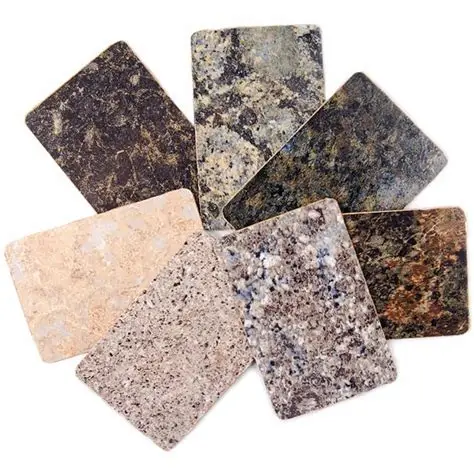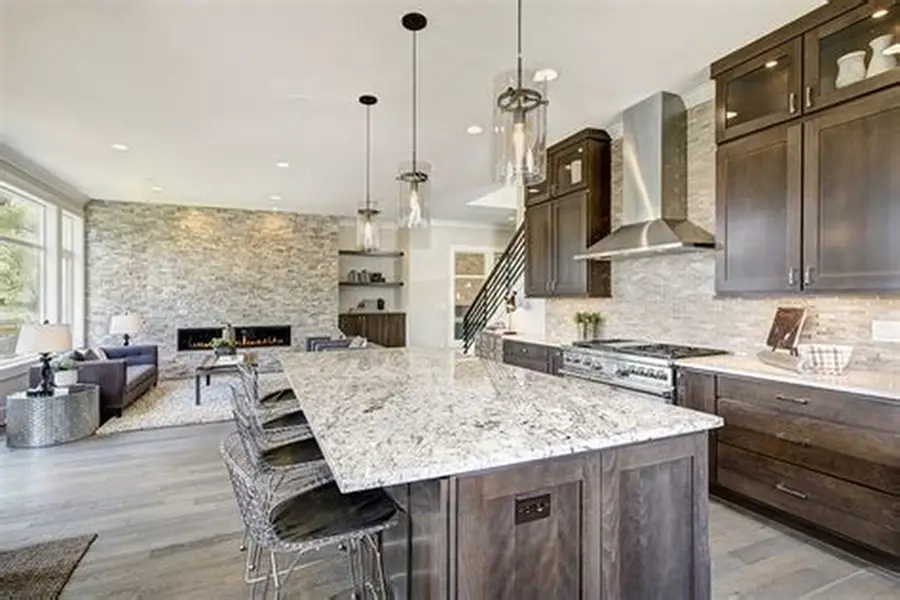Granite is one of the most widely used and recognized stones in both geology and modern architecture. From majestic mountains to elegant countertops, granite stone plays a prominent role in shaping both landscapes and interior design trends. But what exactly is granite—and what type of rock is it?
This comprehensive guide will walk you through granite’s classification, mineral composition, geological formation, and practical applications, while addressing common questions about its use in home design and its comparison with other countertop materials.

Understanding Granite: A Coarse-Grained Igneous Rock
What Kind of Rock Is Granite?
Granite is a coarse-grained intrusive igneous rock formed deep within the Earth’s crust. It crystallizes slowly from silica-rich magma, allowing large mineral grains—mainly quartz, feldspar, and mica—to form visibly.
This slow-cooling process creates a rock that is hard, dense, and full of character, making it an excellent candidate for construction, sculptures, and interior finishes like granite countertops.
Characteristics of Granite
- Color: Ranges from white, black, grey, pink, red to green
- Hardness: 6–7 on the Mohs scale
- Density: ~2.63–2.75 g/cm³
- Composition: Quartz (20–60%), Alkali Feldspar, Plagioclase Feldspar, Mica
- Texture: Phaneritic (coarse-grained), often speckled
- Durability: High resistance to heat, scratches, and weathering
Learn more in this Summary About Granite.

Granite Geology and Composition
Intrusive Igneous Formation
Granite forms when magma slowly cools and solidifies beneath the Earth’s surface—a process taking millions of years. The lack of rapid cooling (as in volcanic rocks) allows large crystals to develop, giving granite its distinctive speckled appearance.
Mineral Composition
- Quartz: Adds hardness and luster
- Feldspar: Responsible for color variation
- Mica (Biotite or Muscovite): Provides sparkle and flecks
- Amphiboles and other trace minerals: Enhance texture and coloration
These elements contribute to the various types of granite—like white granite countertops, black granite countertops, and exotic veined granite options.
Natural vs. Engineered Granite
It’s essential to differentiate natural granite from engineered stone surfaces. While natural granite is quarried directly from the earth, engineered options mimic granite using crushed stone and resin.
| Feature | Natural Granite | Engineered Granite |
|---|---|---|
| Source | Quarried stone | Man-made composite |
| Look | Unique patterns | More uniform |
| Maintenance | Requires sealing | Often lower maintenance |
| Durability | Extremely high | Very high |
Applications: From Earth’s Crust to Kitchen Countertops
Common Uses of Granite
- Building material: Monuments, bridges, floors
- Interior design: Countertops, backsplashes, tiles
- Landscaping: Retaining walls, garden pathways, gravestones
Granite in the Kitchen
Granite is a top choice for:
- Quartz vs granite countertops comparisons
- Natural stone countertop comparisons
- Affordable granite countertop options from Aardwolf granite installation services
- Functional beauty with heat resistance, scratch resistance, and long-term value
Want to know how granite stacks up against modern quartz? Here’s How to Restore Shine to Quartz Countertops.
Granite Countertops: Benefits and Maintenance
Why Choose Granite Countertops?
- Visual Appeal: Unique, natural patterns
- Durability: Withstands heat and heavy use
- Longevity: Lasts decades with proper care
- Value: Adds resale value to homes
Explore the Aardwolf granite countertop collection, featuring some of the best Aardwolf granite colors and designs available globally.
Caring for Granite Countertops
- Clean granite countertops with pH-neutral cleaners
- Sealing granite is essential to prevent stains
- Repairing chips in granite may require professional epoxy
- Learn How to Repolish Granite Countertops
- Restore luster with How to Restore Shine to Granite Countertops
Popular Granite Countertop Styles
White Granite Countertop
Timeless and clean, great for pairing with dark cabinetry.
Black Granite Countertops
Luxurious and modern, ideal for minimalist or high-contrast kitchen themes.
Veined and Marble-Look Granites
Perfect for those wanting the elegance of marble with the durability of granite.
Granite Backsplash Designs
Granite isn’t just for counters—it can be used for:
- Full-height backsplashes
- Mosaic accent tiles
- Seamless integrations
Granite vs Other Countertop Materials
Granite vs Quartz Countertops
Granite is natural, while quartz is engineered. Quartz has uniformity; granite offers uniqueness.
See also: How to Repolish Quartz Countertops
Granite vs Marble
Marble is elegant but softer. Granite is more resistant to stains and scratches.
Granite vs Soapstone
Soapstone is great for rustic aesthetics but not as durable as granite.
Granite vs Concrete Countertops
Granite is more durable and needs less maintenance than porous concrete.
Cost and Availability
Granite Countertop Cost
- Basic granite: $40–60 per sq. ft.
- Premium colors or patterns: $80–200 per sq. ft.
Factors influencing cost:
- Thickness
- Edge profiles
- Finish (honed, polished, leathered)
- Location of source
Where to Buy Granite Countertops
Look for:
- Local granite countertop suppliers
- Granite countertop showrooms
- Wholesale granite suppliers for budget options
Don’t miss the Aardwolf granite pricing guide to get started.
Need help transporting your slabs? See gantry crane solutions for material handling.
Conclusion: Why Granite Remains a Rock Star
So, what type of rock is granite? It’s an intrusive igneous rock with unmatched geological strength, aesthetic value, and widespread applications. Whether used in skyscrapers or stylish kitchens, granite brings the Earth’s power and beauty into daily living.
If you’re considering investing in countertops or learning about rock formations, granite stands out as a symbol of natural elegance and resilience.

